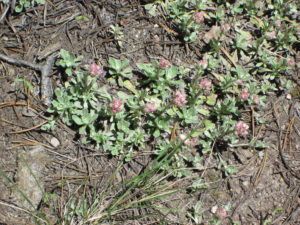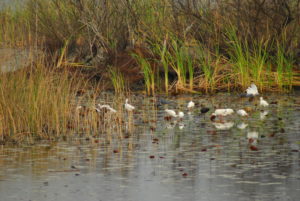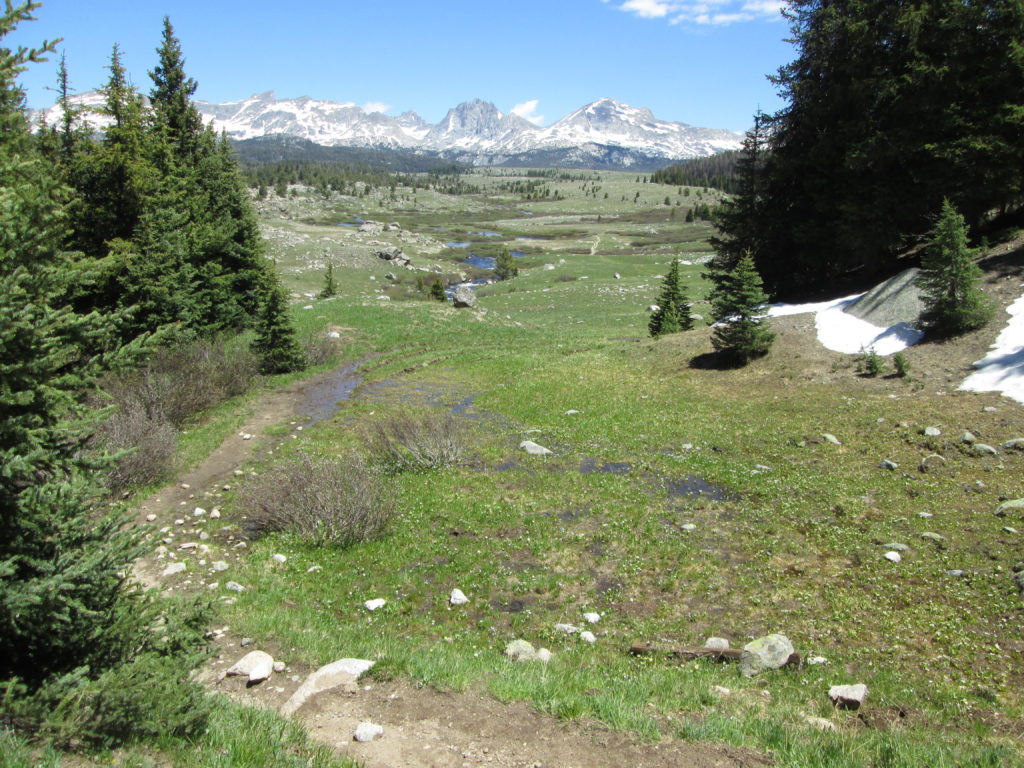“Chk, chk.” The voice comes from a nearly leafless tree in the soggy floodplain of the Baraboo River. I look up at two rusty blackbirds – and now a third flies in. They confer briefly – perhaps about me – and drop to the ground, out of sight. The blackbirds, migrating from their breeding grounds in Canada, are heading south, maybe just to Illinois, but possibly as far as the Gulf of Mexico.
It’s October 24, 2016. One hundred fifty-nine years ago today, John Muir, having just walked “joyful and free” from Indiana to the Gulf of Mexico, fell ill with malaria. His sickness and long recuperation interrupted his plans to travel onward to South America. More importantly, they almost certainly changed the course of conservation history in the United States by sending the young naturalist on a different path.
Of course, the twenty-nine-year-old Muir was not thinking about his role in American conservation when he decided he would sail for New York and from there to California. He was thinking of cool northern air. He was thinking of “new plants and mountains.”
What I was thinking when I read this episode in Muir’s A Thousand-Mile Walk to the Gulf was: What about all those pressed plants he collected and shipped home to his brother in Wisconsin? Over the course of his thousand-mile sojourn, Muir had preserved plants in a small press and then, rather than carry his accumulated store, had mailed them home, presumably so that, at a later date, he could study them at length and perhaps refine some identifications.
I was interested to read Muir’s reactions to the plants, both familiar and unknown, that he found on his journey. Birdwatchers – on the road or at home – have occasion to reflect that migrating birds can, in a sense, unify and connect the regions through which they travel and the humans who observe them along the way. For example, rusty blackbirds that briefly grace the Baraboo and Wisconsin Rivers string together bogs and bottomlands from Ontario to the southern U.S.
For Muir, a botanist, the “plant people” he discovered and studied did likewise. As he traveled he compared and contrasted familiar plant families and genuses. Recognizing a plant, or recognizing its resemblance to a known Wisconsin plant, seemed to make him feel more connected or at home in his immediate surroundings.

I “collected” this specimen while visiting Wyoming because it reminded me of sedums that grow iin Newfoundland.
Traveling naturalists do this all the time; it’s like being an in-law at a family reunion (“That must be one of the Murphys; I can tell by the green eyes and red hair”). In my own travels, I like spotting the Murphys as well as the plant people whose families I can’t pinpoint. Like Muir, I collect as many specimens as I can, but with a camera rather than a plant press. When I get home, though, I tend to set my discoveries aside. Photos of trips long past pile up in the computer, unstudied, unnamed, as I hurry off to the next alluring project.
Sometimes I’m frustrated by my negligence. But when I consider Muir’s exuberant reactions to flowering landscapes and beautiful vistas, I’m reminded that it is not always necessary to name all that falls under my gaze. Knowledge matters, but feeling matters, too.
I like to think that John Muir retrieved his pressed plants at some point and could enjoy studying them at leisure. But what if he didn’t? I suppose every life has some dropped threads, some unnamed photos and unclaimed packages – a few unfinished projects on the way to the next alluring destination. If we are fully alive, perhaps our reach will always exceed our grasp. In 1867, California awaited.
Muir, John. A Thousand-Mile Walk to the Gulf. ed. William Frederic Bade´. Boston: Houghton, 1981.


